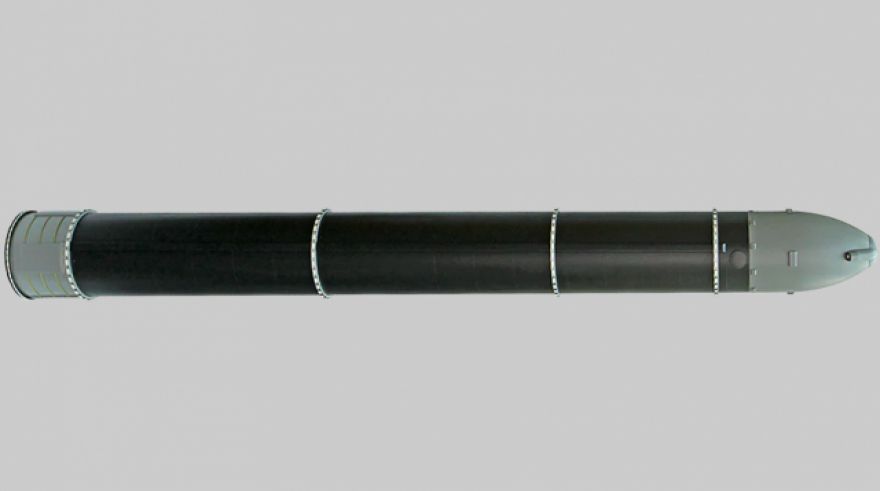
Russia unveils its new class of RS-28 ‘Satan 2’ nuclear missiles
Russia unveiled its new super-heavy, MIRV-equipped ICBM this week. The ‘Satan-2’ (that’s its NATO codename), has a reported throw-weight of 10,000kg, and can carry up to 15 separate warheads. MIRV is an acronym that stands for Multiple Independently Targeted Vehicles. MIRV-equipped missiles can deliver multiple to a single target area, or blanket a large area with separate detonations. Historically, MIRVs have been seen as potentially destabilizing because they give a decisive advantage to the country that can strike first and eliminate its opponent’s land-based missile silos.
The stats on the RS-28 demonstrate this is a missile that means business, and media outlets controlled by the Russian government have stated that a single missile is large enough to destroy Texas or France.
To put some historical figures on this we turned to , a fascinating (if macabre) nuclear weapon simulator. According to Nukemap’s data, detonating Little Boy, the same weapon we dropped on Hiroshima, directly over Manhattan would kill 263,560 people and injure another 512,000. The worst effects would be concentrated on lower Manhattan, as would the devastation. Increase to a 50MT weapon, and the casualties rise to 7.63 million dead and another 4.19 million injured.
Nukemap’s estimated blast radius and fallout zones for a 50MT warhead detonated over Manhattan.
The RS-28 is slated to replace the much-older R-36 (aka, Satan). Like the United States, Russia undertook multiple programs to modernize its ICBM weapons since the R-36 deployed in 1970. After the fall of the Soviet Union, Russia sharply reduced its total number of missile silos and re-purposed a number of ICBMs into launch vehicles for lightweight satellites. There’s also been talk of using some old R-36 missiles to destroy small asteroids.
Obviously it’s a significant development when one of the world’s nuclear powers deploys new, advanced technology. But there’s no reason to believe that the RS-28 fundamentally alters the balance of power between the US and Russia. Both countries maintain what’s known as the “nuclear triad” — a combined force of missile silos, manned bombers, and submarine-launched ICBMs. During the later years of the Cold War, Russia relied heavily on its fixed silos, while the US focused on submarine deployments. Russia is thought to have shifted some of its nuclear launch capability to submarines since the fall of the USSR. Despite mutual reductions to our nuclear stockpiles, both Russia and the US remain capable of wiping the other off the map.
At the same time, however, it’s hard to miss the fact that Russia is showing off its newest military hardware now, as Election Day in the US draws near. To say Russia has taken an unprecedented and very public interest in who the US elects in 2016 would be understating the situation. The US intelligence community and independent security researchers the DNC hack was perpetrated by hackers affiliated with the . In September, to the UN when Zeid Ra’ad al-Hussein, the UN high commissioner for human rights and a Jordanian citizen, criticized Trump. On October 12, longtime Putin ally Vladimir Zhirinovsky if Hillary Clinton is elected, saying:
Americans voting for a president on Nov. 8 must realize that they are voting for peace on Planet Earth if they vote for Trump. But if they vote for Hillary it’s war. It will be a short movie. There will be Hiroshimas and Nagasakis everywhere.
America and Russia used to exchange this kind of rhetoric, but generally have not done so since the early 1980s. Zhirinovsky made no equivalent remarks in , even when he expressed disapproval of which candidate had been elected. Multiple paint Russian leaders and the public as interested in whether Romney or Obama would win the election, .
In 2016, Russian-owned TV and news networks to have taken a . Unveiling a new nuclear missile fits the pattern of behavior we’ve seen from Russia — Putin has a distinct preference in this race, and he’s pulled out all the stops to sow FUD (Fear, Uncertainty, and Doubt) between both Sanders and Clinton supporters, and between Clinton and Trump over the supposed risk of nuclear war. There is no proof that Putin acted in concert with Trump, but that doesn’t make Russia’s willingness to invest heavily in such a public FUD campaign any less unusual. What was normal (if dangerous) rhetoric during the Cold War isn’t what’s been normal for the last several decades.
But FUD is all it is. Vladimir Putin is a cunning and ruthless political opponent, but he’s also keenly aware of the humanity-ending disaster that could be triggered in a rapidly escalating nuclear exchange. Hillary Clinton has often been criticized for being overly hawkish, but there is zero indication she would approve or support a first-strike initiative against . The doctrine of mutually assured destruction has kept diplomatic crises and full-scale wars from going nuclear at much more dangerous flash points than anything we face today. While relations with Russia have been chilly of late, there’s no sign of nuclear conflict — Zhirinovsky’s comments notwithstanding.
Now read:
(Top image credit: Makeyev Rocket Design Bureau)